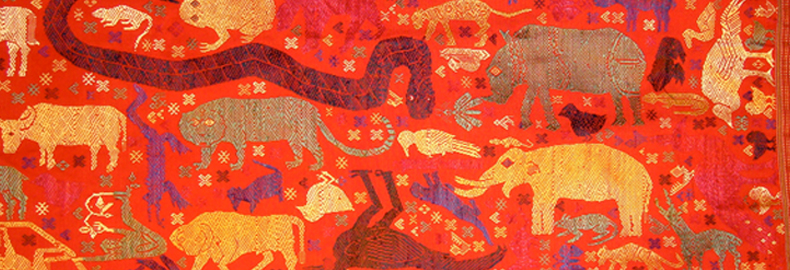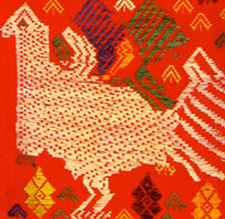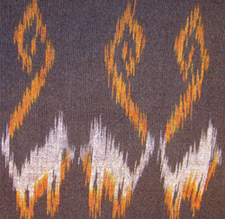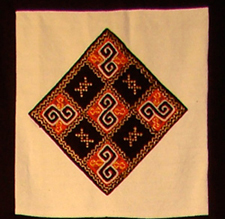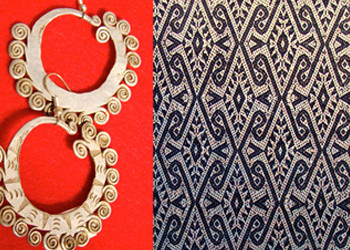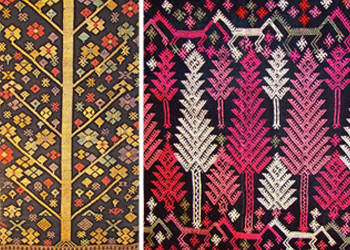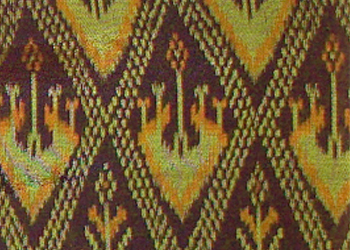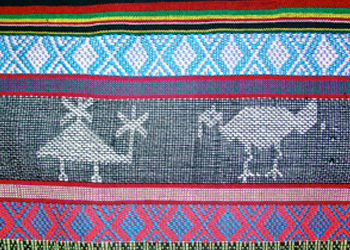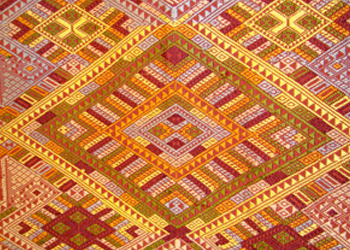Thehill tribe weavers incorporate a wide variety of traditional animal, plant, mythical and ancestor worship patterns in their designs.
Many of the motifs are readily identifiable. However, in the shaman cloths, the motifs are not only "hidden" to the casual observer, but are also believed to be unrecognizable by spirits that may be causing illness or bad luck. The shaman can thus sneak the positive spirits needed for healing into a room on their clothing, and then, through ritual ceremony, unleash these hidden positive spirits of the cloth to dispel those spirits causing distress.
Also, shaman cloths are often used as the centerpiece of a wedding blanket, ensuring the couple protection from negative spirits.
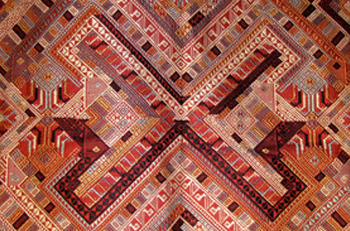
Large silk shaman cloth or ceremonial wedding blanket with naga designs.
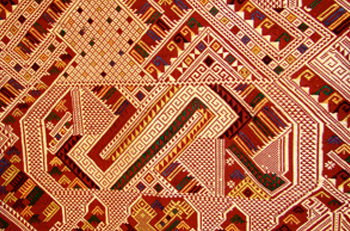
Siho (elephant lion) pregnant with naga (mythical river serpants) and with a trunk that turns into a pregnant naga.
A design's interpretation may change with time and location, but the motifs essentially remain the same.
While motifs vary from culture to culture, we have found that authorities, whether textbook writers or village weavers, often differ on a motif's representation. For example, one weaver's gourd seed motif is what another authority may designate a flower. This is understandable in that the traditions that generate and guide these motifs not only most often come from centuries past, but also from a wide variety of very different ethnic groups. As Patricia Cheesman (see recommended books) indicates, a design's interpretation may change with time and location, but the motifs essentially remain the same. Regardless, what matters is what is in the heart of the individual designer and weaver, and in the imagination of those who use and enjoy the art.
Many items on the following list of motifs may designate an earthly or spiritual design. For example, a snake motif may represent either a land snake, or a mythical river serpent.
Some of these motifs date back over 1000 years and can be found in the ancient poetry of courtship, proverbs, or oral literature; other motifs have been introduced recently, as with wartime icons. Weaving is an active and creative art, and by no means a staid reproduction of ancestors' ways.
The most common motifs, by category, are:
Mythical/Spiritual Creatures
(often found in oral and written folk tales and myths):- Ancestor Spirits: A symbol of protection for a journey in one's current life or in the afterlife.
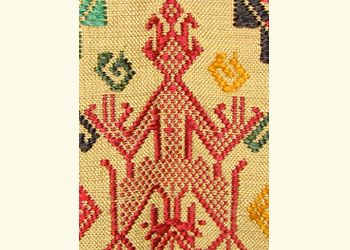
Ancestor spirit with small naga above his hands.
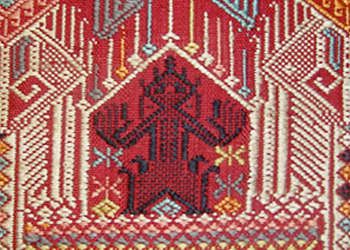
Ancestor spirit in a spirit boat with a temple-shaped roof and naga-headed candelabra.
- Eagles (Huong): This fearsome bird, often on children's clothes, protect babies from bad spirits.
- Elephant lions (Siho) and Elephant-birds: A symbol of invincible strength and political power.
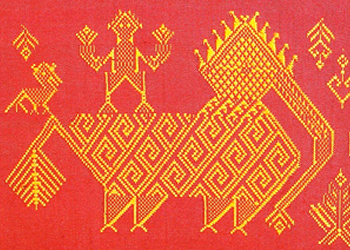
Siho (mythical elephant-lion) with ancestor spirit on its back, a hong bird standing on its tail, and flowers.
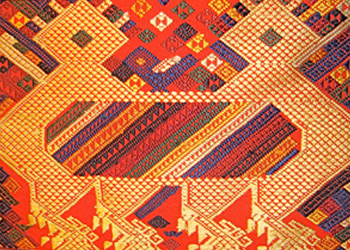
Two-headed crested siho with a rainbow belly, hong bird on its back, and flowers.
- Flying horses: In Lao literature, these often performed essential tasks for military heroes.
- Frog-person: Ancient tradition associates frog-people with essential monsoon rains.
- Giant-Spirit: A terrifying protector who stands guard in doorways (often used in door curtains).
- Gibbon-person: An ancient story tells of a mother gibbon bringing food to starving children.
- Hong birds: Stylized birds that some references say are male spirits, but, when flying, are mythical swans that represent socially privileged women.
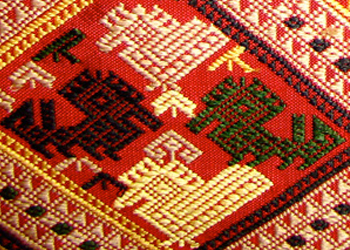
Hong birds (supplemental weft design).
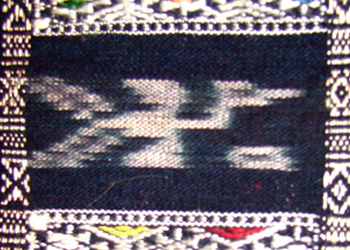
Flying hong birds (mat-mi design).
- Horse-deer: Another animal from myth that represents strength.
- River serpent (Naga or Ngueak): A most popular motif, these serpents offer protection. Some say they represent the female spirit. Other mythology talks of naga taking human form, both male and female, and marrying humans. These serpents are protectors of the home, and, as they live in the rivers, are connected to the water needed to sustain the rice harvest.
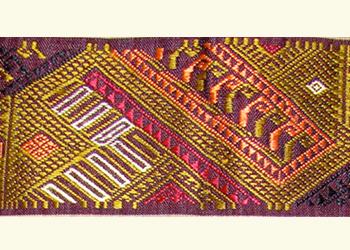
Two-headed naga with both heads in the triangle shape, one with a diamond-shaped peach-colored eye and white and gold crest, and one head with a small white eye.
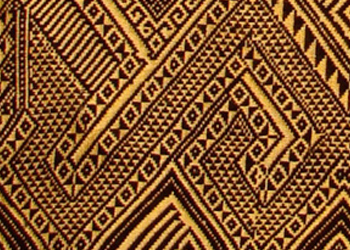
Naga with curled tail.
Living Animals
(local folk tales are replete with animal characters):